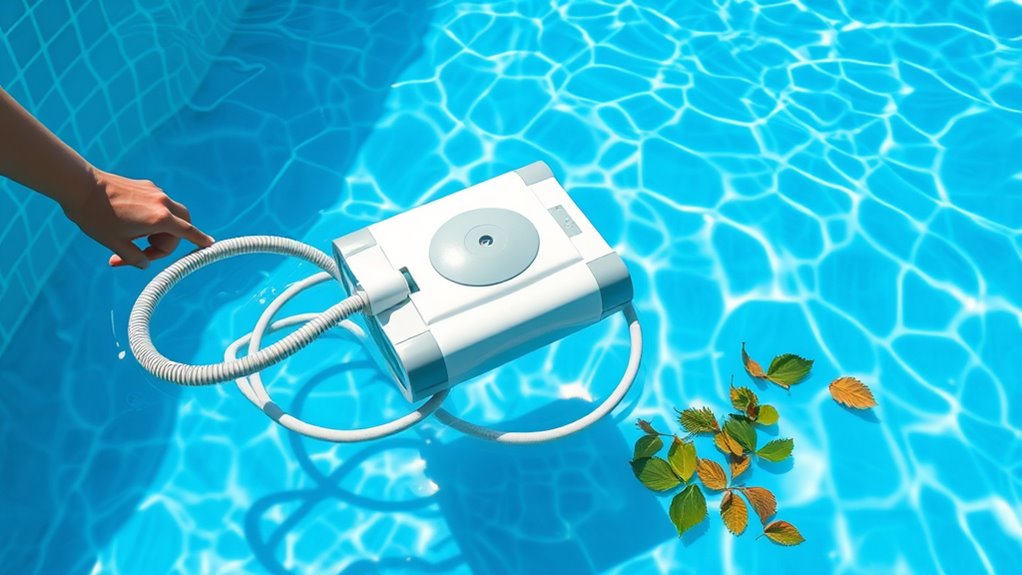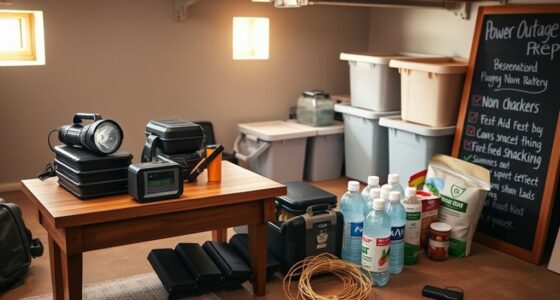To get the best results from your suction pool cleaner, avoid common mistakes like improper placement, neglecting regular filter cleaning, and using the wrong size or type for your pool. Also, make sure water levels stay balanced and follow the manufacturer’s guidelines for setup and use. Proper maintenance and setup can prevent damage and save time. Keep reading to discover how to troubleshoot and optimize your pool cleaning process further.
Key Takeaways
- Ensure proper placement and setup to maximize navigation and prevent the cleaner from getting stuck.
- Regularly clean filters, inspect hoses, and maintain water levels for optimal suction and performance.
- Choose the right cleaner size and type suited for your pool’s shape and surface.
- Follow manufacturer guidelines and avoid overworking the cleaner to prevent damage.
- Practice safety by disconnecting power before maintenance and operating in suitable weather conditions.
Improper Placement and Positioning of the Cleaner
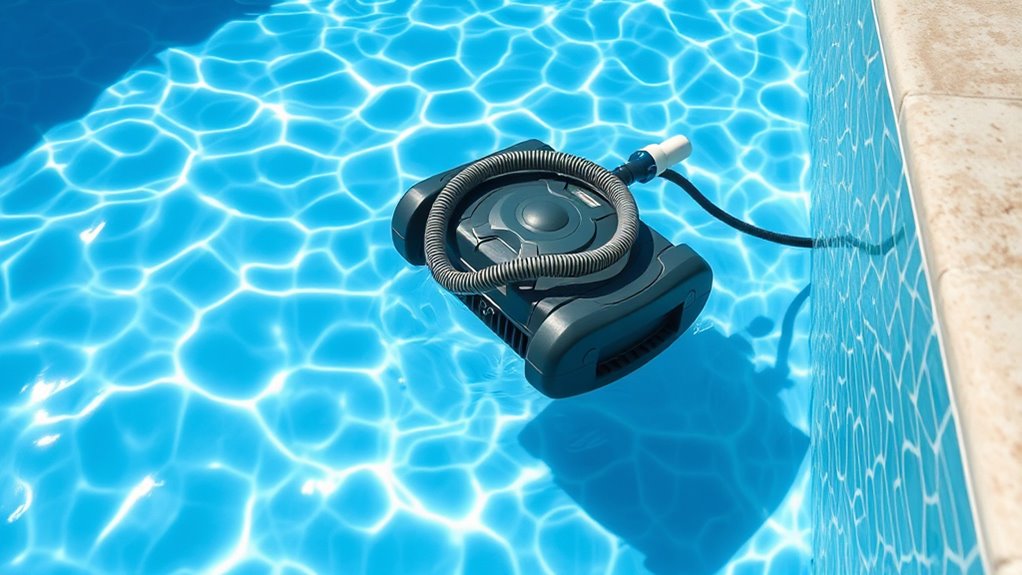
Even when using a suction pool cleaner, improper placement and positioning can considerably reduce its effectiveness. If you don’t place it correctly, navigation issues may arise, causing the cleaner to miss large areas or get stuck. Proper positioning helps ensure the cleaner can move smoothly across the pool surface, avoiding obstacles that could hinder its progress. Position the cleaner near the pool’s center or in open areas to optimize coverage. Remember, if it’s too close to walls or steps, it might struggle with obstacle avoidance, wasting time and energy. Regularly reposition the cleaner during cleaning cycles to prevent it from getting trapped or repeatedly hitting the same spots. Correct placement is essential for efficient cleaning, saving you time and ensuring your pool gets thoroughly cleaned. Using a vetted device can help improve overall performance and durability. Paying attention to cleaner navigation can further enhance cleaning efficiency and prevent common issues. Additionally, understanding pool surface types can assist in selecting the best cleaning strategies and equipment for your specific pool. Properly configuring cleaner settings can also contribute to more effective cleaning sessions. Implementing proper maintenance practices can extend the lifespan and effectiveness of your pool cleaner, ensuring consistent performance over time.
Neglecting Regular Maintenance and Filter Cleaning

Neglecting regular maintenance and filter cleaning can substantially hinder your suction pool cleaner’s performance. When you ignore this, filter clogging and debris buildup occur more quickly, reducing suction power. To keep things running smoothly, follow these steps:
Neglecting filter cleaning reduces suction; regular maintenance keeps your pool cleaner performing at its best.
- Check and clean the filter regularly to prevent clogging.
- Remove debris buildup from the filter basket or cartridge.
- Inspect hoses for blockages that can restrict flow.
- Rinse the filter thoroughly to remove dirt and debris.
- Incorporate regular maintenance routines to prolong your cleaner’s lifespan and ensure optimal operation. Additionally, using filters with effective filtration methods, such as HEPA or activated carbon filters, can help maintain better overall performance and air quality. Regularly inspecting and replacing worn parts can also prevent unexpected malfunctions and maintain optimal cleaning efficiency. Enhancing your maintenance schedule by scheduling routine checks can further prevent issues before they arise and keep your pool cleaner functioning at its best. Incorporating proper filtration techniques can further enhance the performance and longevity of your pool cleaner.
Using the Wrong Size or Type of Cleaner for Your Pool
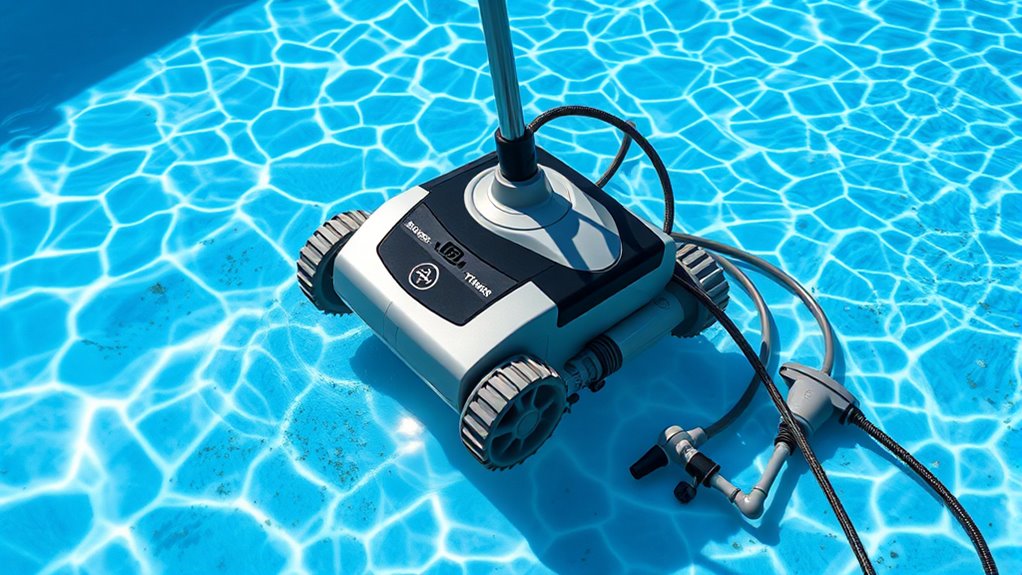
Choosing the right size and type of suction pool cleaner is essential for effective cleaning. If your cleaner is too small or unsuitable, it won’t cover the entire pool efficiently, leading to missed spots and uneven cleaning. Conversely, a model that’s too powerful may damage delicate pool surfaces or disturb the chemical balance. Verify your cleaner fits your pool size and shape, and check its compatibility with your cleaning schedule. Using the wrong type can also hinder debris removal, forcing you to clean more frequently or manually intervene. Properly matching your cleaner to your pool helps maintain the right chemical balance and reduces the need for extra chemicals. Selecting the appropriate cleaner type ensures optimal performance and longevity of your equipment. Making the correct choice saves time, prolongs equipment life, and keeps your pool cleaner and healthier. Additionally, choosing a model with appropriate suction power helps prevent unnecessary strain on your pump and filter system. Considering pool surface compatibility is also important to avoid potential damage and ensure efficient cleaning. Understanding pool size and shape can further optimize your cleaning process and prevent equipment overload or underperformance.
Overlooking the Importance of Proper Pool Water Level
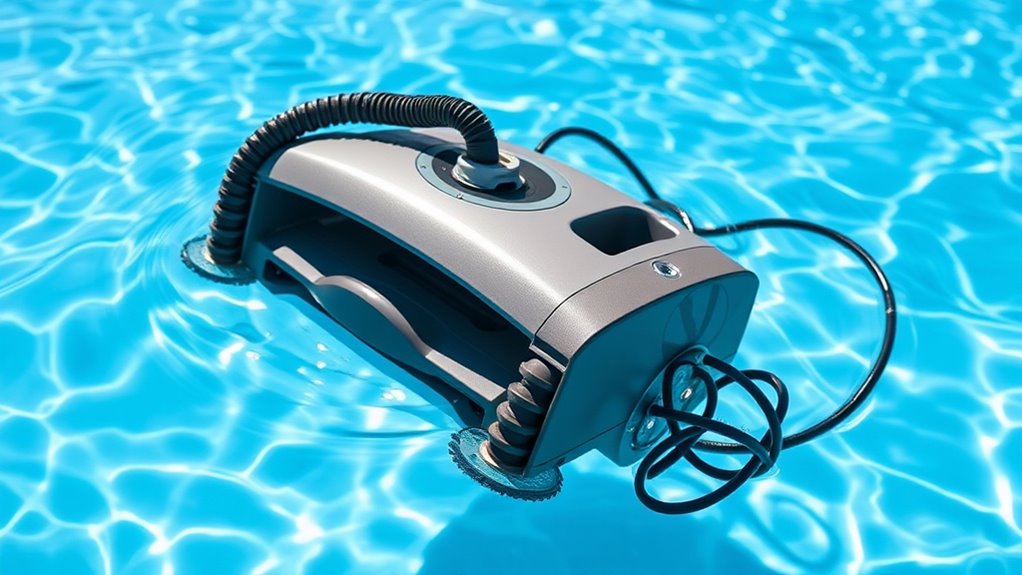
Maintaining the correct water level in your pool is essential for your suction cleaner to operate effectively. When water levels are off, water level awareness declines, reducing suction efficiency. To avoid this mistake:
Keep your pool water at the right level for optimal cleaner performance.
- Check the water level regularly, ensuring it’s about halfway up the skimmer opening.
- Add or drain water as needed to maintain proper levels.
- Avoid overfilling, which can cause the cleaner to lose suction.
- Be mindful after heavy rain or water evaporation, both of which can disrupt ideal water levels.
- Remember that water quality can also influence the performance of your pool cleaner, so maintaining proper water chemistry is equally important.
- Being aware of city water supply fluctuations can help you anticipate changes in your pool’s water level and prevent issues with your cleaner.
- Staying informed about pool maintenance best practices can further help ensure your cleaner functions optimally.
- Additionally, understanding the history of pool technology can provide insights into how certain features impact water level management and cleaner operation.
- Regularly inspecting your pool’s skimmer and return jets can help identify potential issues that affect water circulation and levels.
Ignoring Manufacturer Guidelines and Recommendations
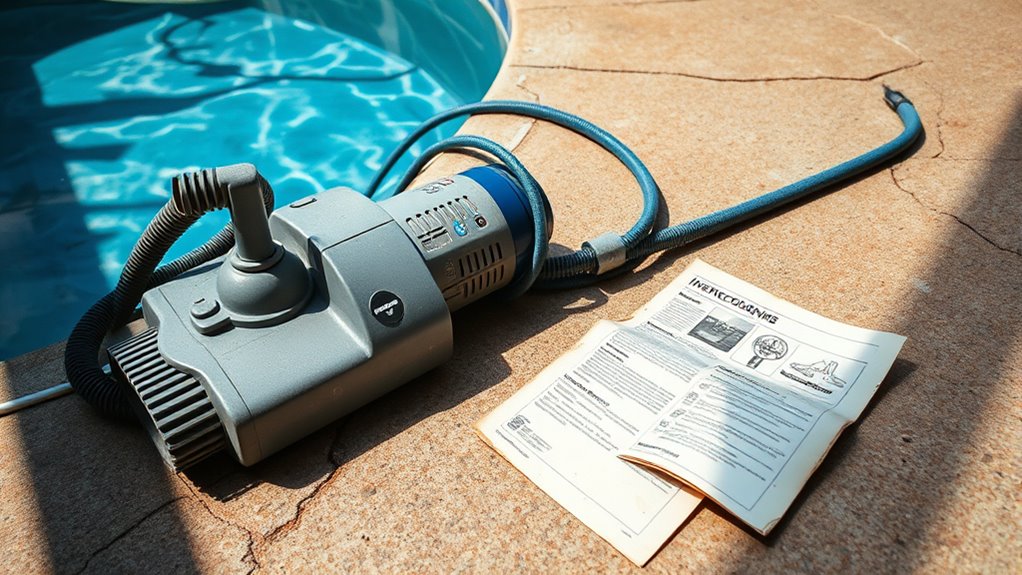
Failing to follow the manufacturer’s guidelines and recommendations can lead to ineffective cleaning and even damage to your suction pool cleaner. Manufacturer instructions provide essential details on setup, operation, and maintenance that guarantee peak performance. Ignoring these guidelines might cause you to misuse the cleaner, reducing its lifespan or leaving your pool uncleaned. Safety precautions outlined by the manufacturer are vital for preventing accidents or injuries. Always read and adhere to these instructions before installing or operating your cleaner. Proper maintenance practices are also crucial for optimal operation and longevity. Regularly inspecting and cleaning the filter components can prevent buildup and ensure efficient operation. Additionally, understanding the filter replacement schedule ensures continued optimal performance and prevents unnecessary wear. Following these manufacturer guidelines is essential for safe, effective, and long-lasting use of your pool cleaner. Being aware of recommended usage limits can help avoid overworking the equipment, which might otherwise lead to premature failure.
Frequently Asked Questions
How Often Should I Replace My Pool Cleaner’S Parts?
You should replace your pool cleaner’s parts based on usage and wear. Typically, inspect parts monthly during pool maintenance, and replace worn or damaged components to guarantee ideal equipment lifespan. Key parts like hoses, brushes, and filters may need replacement every 6 months to a year, depending on use. Regular upkeep helps your cleaner work efficiently and prolongs its lifespan, saving you money and hassle in the long run.
Can I Use a Suction Pool Cleaner for a Saltwater Pool?
They say, “know your tools,” so yes, you can use a suction pool cleaner for a saltwater pool. Just make certain it’s saltwater compatible to prevent corrosion. Regular cleaner maintenance is key to keep it working efficiently. Check the manufacturer’s instructions for saltwater suitability, and clean or replace parts as needed. Proper care will extend your cleaner’s lifespan and keep your pool spotless.
What Signs Indicate My Cleaner Is Malfunctioning?
If your suction pool cleaner isn’t working properly, look for signs like it missing pool debris or moving very slowly. You might notice reduced suction, which indicates a filter clog or blockage. Also, if it stops moving altogether or gets stuck on the pool’s walls, it’s a sign of malfunction. Regularly check the hoses and filter to guarantee nothing is obstructing proper operation and keep your cleaner running smoothly.
Is It Safe to Leave My Cleaner in the Pool Overnight?
Is leaving your cleaner overnight a gamble or a safe bet? Think of pool safety as your guiding star—it’s best to remove the cleaner after use to prevent damage or clogging. Proper cleaner storage guarantees it stays in top shape and your pool stays safe. While some pool owners leave it overnight, it’s safer to store it properly to avoid unnecessary issues and keep your pool pristine and protected.
How Do I Troubleshoot if the Cleaner Is Not Moving Properly?
If your suction cleaner isn’t moving properly, start troubleshooting pool movement issues by checking the hose for clogs or leaks. Make certain all connections are tight and the hose isn’t tangled or kinked. Verify the skimmer or pump basket isn’t clogged, as this affects suction. Adjust the cleaner’s weight if needed. Proper troubleshooting can restore effective cleaning and keep your pool sparkling.
Conclusion
Avoiding these common mistakes is like steering a boat smoothly through calm waters—you’ll enjoy a cleaner pool with less hassle. Make sure you position your cleaner correctly, keep up with maintenance, choose the right model, maintain proper water levels, and follow manufacturer guidelines. When you pay attention to these details, your suction pool cleaner works efficiently, just like a well-oiled machine. Keep these tips in mind, and you’ll have a sparkling pool all season long.
